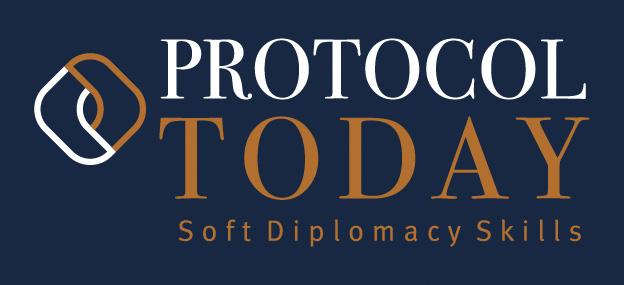Reflections from the students of the ProtocolToday Academy.
Introduction
In Spanish, the phrase ‘the cherry on top’ (la cereza en el pastel) symbolizes the idea that something good can consistently be elevated to perfection by adding that extra touch, akin to the irresistible allure of a cherry on a cake. This expression encapsulates the essence of my recent revelation—a profound dive into the subtle and influential realm of etiquette and protocol.
A Stylish Tool
Recognizing that etiquette and protocol are indispensable in both professional and personal spheres, they play a pivotal role in shaping a positive image and fostering meaningful relationships. Within the realm of my work as an international coach and speaker, the application of etiquette and protocol yields multiple advantages, encompassing the cultivation of a professional image, the establishment of robust business relationships, the promotion of cultural diversity, adept handling of delicate situations, and the compelling charisma of leaving a remarkable impression through refined manners.
From navigating the intricacies of handling a business card—still relevant despite my inclination towards sustainability—to the art of dining beside an ambassador, etiquette and protocol act as keys to unlocking a new world. You may have lived without these keys for the entirety of your life, feeling content with your existing knowledge. However, possessing these keys opens doors to a world you may not have known existed, one teeming with productivity and profitability.
The Master Key
My professional universe revolves around the cooperative sector and business training, aiming to enhance productivity through a culture of cooperation. My understanding of etiquette and protocol was initially limited to hosting higher-quality events, adhering to essential rules for entertaining special guests and maintaining a proper presentation order. However, this is merely the starting point.
In my professional endeavours, protocol is the key to unlocking new topics and soft skills that distinguish me in the market, even among individuals or companies within my sector. Recognizing and applying etiquette and protocol according to each country’s unique cultural, religious, and business contexts is imperative internationally, given the inherent diversity in these aspects. Importantly, this knowledge has enabled me to delve deeper into cooperation and solidarity.
Each culture boasts distinct social norms and expectations, and a lack of awareness or respect for these can lead to misunderstandings and unnecessary tensions. Cultural etiquette, spanning greetings, gestures, and business practices, allows for establishing profound and respectful connections that nurture cooperation and solidarity. Neglecting or misinterpreting religious considerations can result in a lack of cultural sensitivity, potentially jeopardizing professional opportunities or causing avoidable tensions that impede the cultivation of cooperative and mutually supportive relationships.
In the global business arena, adapting to each country’s specific norms and expectations is paramount for establishing robust relationships and ensuring the success of business transactions. From my perspective, it serves as a testament to clients that I have taken the time to understand
their codes, customs, rules of engagement, and worldview. Only by comprehending their unique context can I truly delve into developing strategies for cooperation and solidarity.
In Conclusion
Business contexts exhibit wide-ranging diversity worldwide, encompassing leadership styles, negotiation techniques, and collaborative practices. Appreciating these variations and respecting local business standards can be the defining factor between international success and failure. Companies and professionals who adeptly apply etiquette and protocols showcase a genuine commitment to cultural adaptation and fortify their business relationships and global reputation. While it’s regrettable that my deeper exploration into business etiquette and protocol did not occur sooner, I am immensely gratified to possess this master key now.
ADVERTISE YOUR COMPANY INTERNATIONALLY IN OUR MAGAZINE GLOBAL MINDSET
ProtocolToday Magazine
Share this article

Writter by Darío Castillo Sandoval, Economist, specialist in local planning and regional development, master in rural development.
19 de Febrero 2024, Canada
Category: Business Etiquette
Reference: DC19022024BE

















